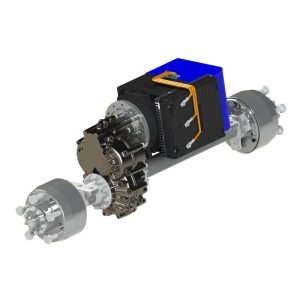Introduction
Electric vehicles (EVs) have revolutionized the automotive industry with their efficient and eco-friendly design. At the heart of their functionality is the power distribution system, where the drive shaft plays a crucial role.
Drive Shaft in Electric Vehicles
What is a Drive Shaft?
A drive shaft, integral to the powertrain, is a mechanical component used for transmitting torque and rotation. It connects components of a drive train that cannot connect directly due to distance or the need to allow for relative movement between them. In electric vehicles, this component is essential for the smooth transfer of power from the motor to the wheels. For a detailed understanding, you can refer to what’s a drive shaft.
Role in Power Distribution
In electric vehicles, the drive shaft’s primary role is to transmit the rotational power generated by the electric motor to the drive wheels. This process is pivotal for the vehicle’s movement. The efficiency of this transmission affects the overall performance of the vehicle.
Key Aspects of Drive Shafts in EVs
Efficiency
Drive shafts in electric vehicles are highly efficient. They typically lose only a small percentage of power during transmission, maximizing the vehicle’s overall efficiency.
Material and Quality
Manufacturers often use lightweight, high-strength materials such as carbon fiber or advanced alloys for drive shafts in EVs. This choice of material ensures durability while minimizing the weight, which is crucial for maintaining the efficiency of the vehicle.
Speed and Torque Handling
Electric vehicle drive shafts are designed to handle high torque at low speeds, a characteristic of electric motors. This capability is crucial for providing instant acceleration and smooth power delivery.

Cost and Budget Considerations
The cost of a drive shaft for an electric vehicle varies depending on the material and design complexity. It is a significant factor in the overall budget of the vehicle’s powertrain.
Dimensions and Specifications
The size and specifications of a drive shaft in an EV are tailored to the vehicle’s design. These parameters are critical for ensuring compatibility with the motor and wheel assembly, impacting the overall performance and efficiency.
Advantages
Drive shafts in electric vehicles offer numerous advantages, including reduced weight, increased efficiency, and the ability to handle high torque levels. These benefits contribute to the superior performance and eco-friendliness of EVs.
Lifespan and Durability
The lifespan of a drive shaft in an EV is significantly long, often matching the vehicle’s life. This durability is due to the high-quality materials and advanced manufacturing techniques used.
Potential Drawbacks
While drive shafts in EVs are generally reliable, they can be expensive to replace if damaged. Furthermore, their specialized design may limit repair options to specific service centers or manufacturers.
Conclusion
The drive shaft is a vital component in the power distribution of electric vehicles. Its efficiency, material quality, and ability to handle high torque levels play a significant role in the performance and sustainability of EVs. Despite its higher cost, the drive shaft’s advantages in terms of efficiency and environmental impact make it a key element in the future of automotive technology.